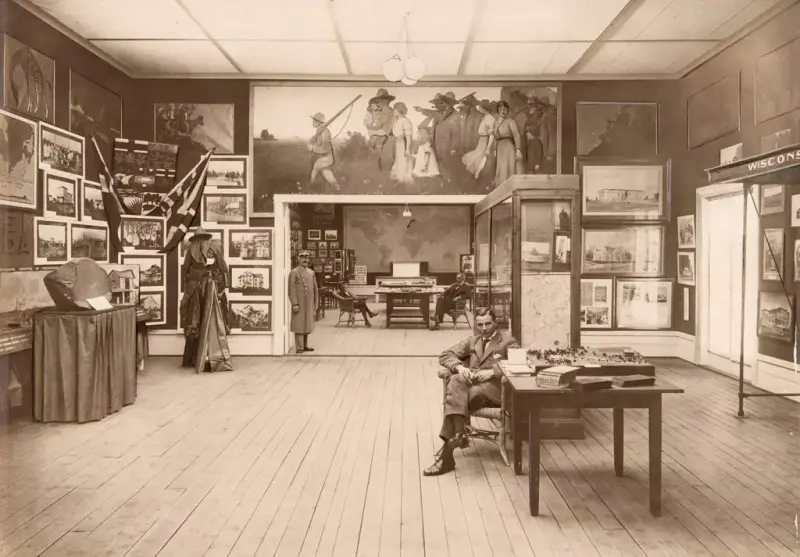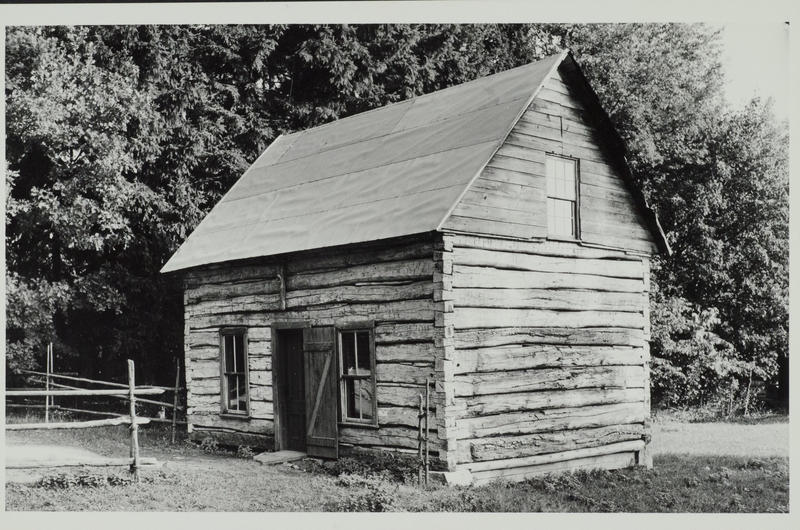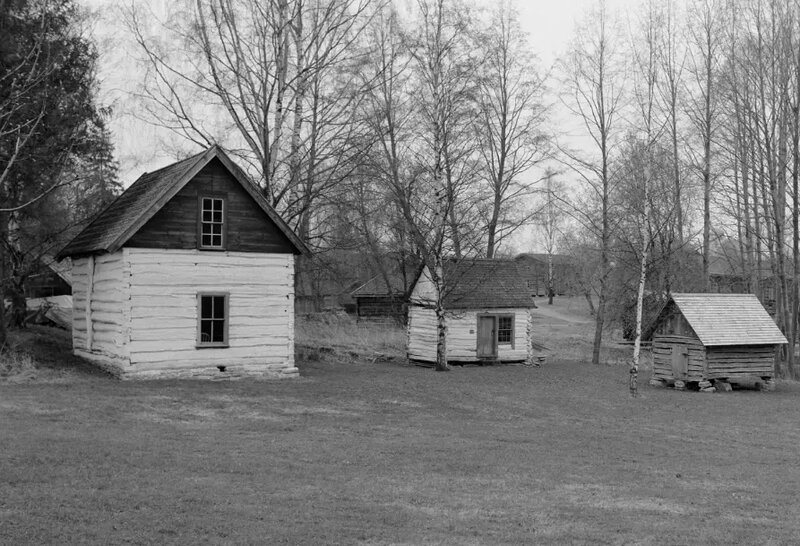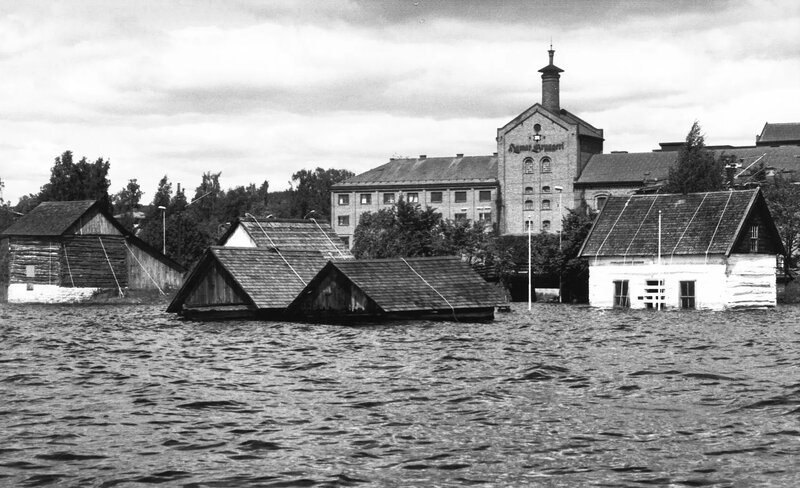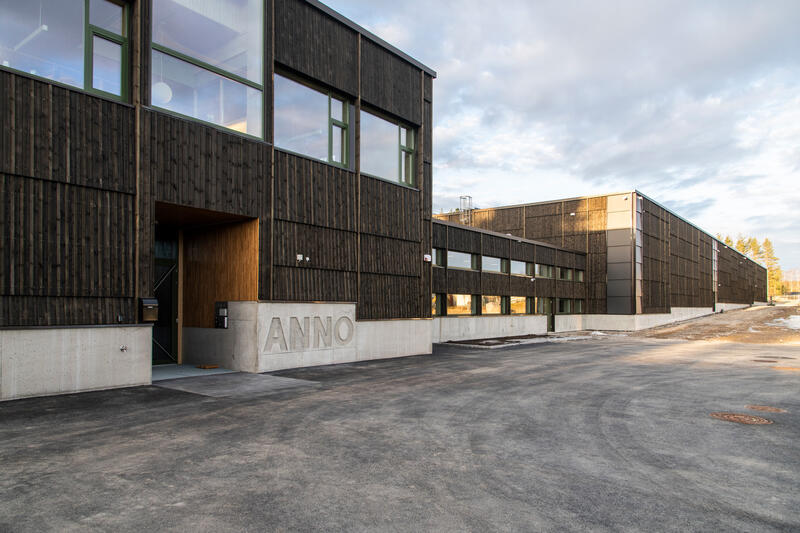A brief history of the museum
Like most migrants, the Norwegian Emigrant Museum has also led a migratory existence. Various events have caused the museum to move from place to place. After several re-establishments in new locations, the museum is currently situated in Ottestad outside Hamar. How did it end up here?
1914 - The Jubilee Exhibition in Kristiania
Many years of emigration from Norway had made a significant impact on Norwegian society. A large portion of the population had moved away, but some also returned. Perhaps after having earned money to invest in Norway. Both new ideas and goods began to appear in Norway, strongly contributing to development and growth.
At the centenary of the Norwegian constitution in 1914, a large jubilee exhibition was set up in the capital Kristiania (now called Oslo). The exhibition presented the country's development from a farming society to an industrial society. An entire pavilion was devoted to Norwegian emigration. Here the public could study pictures and objects from many places around the world to which Norwegians had emigrated.
- 1/1
From the emigrant pavillion in 1914. Anno Norsk utvandrermuseum
The organization Norwegians Worldwide (aka Nordmanns-Forbundet) in Oslo took over the exhibition material afterwards. Norwegians Worldwide was established in 1907 to promote Norwegian culture and a sense of community between Norwegians at home and abroad. This organization aimed to establish a permanent museum for Norwegian emigration.
1955 - The Norwegian Folk Museum, Oslo
The Emigrant Museum's first building was a small house, built by Norwegian emigrants in Kindred, North Dakota and moved back to Norway. In 1955 the organization Norwegians Worldwide had the Kindred house rebuilt at the Norwegian Folk Museum in Oslo. "The pioneer cabin" was inaugurated as the beginning of a Norwegian emigrant museum.
- 1/1
The house in Kindred, North Dakota.
- 1/1
"The pioneer cabin" rebuilt at the Norwegian Folk Museum in Oslo
1972 - The Hedmark Museum, Hamar
Unfortunately, the Norwegian Folk Museum did not have room for any additional Norwegian-American buildings. In 1962, Norwegians Worldwide had bought a second building, the Gunderson house, and were therefore looking for a suitable place to set up an entire emigrant museum with multiple buildings. They decided on the Hedmark Museum area at Domkirkeodden in Hamar. Both the Kindred and Gunderson houses were rebuilt there in 1972. Later, the Bjorgo granery was placed beside them.
In 1983, the Emigrant Museum became a separate department of the Hedmark Museum.
- 1/1
The Kindred and Gunderson houses with the Bjorgo granery at Domkirkeodden. Anno Domkirkeodden
1988 - Koigen, Hamar
After gaining independent, national museum status in 1988, the Norwegian Emigrant Museum’s buildings were moved away from Domkirkeodden and rebuilt closer to town. Eventually a barn and a corn crib were also added to the museum's new site Koigen. The museum was planning for further expansion of the museum when in 1995 a great flood hit lake Mjøsa. The entire museum area was submerged, and the museum once again had to find a new location.
- 1/1
Flooded museum buildings in 1995. Jan Haug / Anno Domkirkeodden
1995 - Åkershagan, Ottestad
The buildings of a large institution for the mentally disabled in Ottestad had become vacant in 1994, due to a national reform. The museum was granted one of these institutional buildings and 6.2 acres of land at Åkersvika where a museum park could be constructed. Between 1995 and 1998, all the museum’s historical buildings were moved from Koigen and rebuilt at Åkershagan.
The museum has later added a church, a school and a two-storey house to the open air museum. Read more about our buildings here.
- 1/1
The Emigrant Museum in Ottestad
2010 - Anno Museum
During the early 2000’s a major reorganizing of museums took place in Norway, resulting in fewer and larger museum units. In 2010 the museums of Hedmark county merged to form Hedmark County Museum. This museum organization was renamed Anno Museum in 2014. Anno Museum is the operating company that assists the various museum departments with services such as marketing, accounting and object preservation. The Norwegian Emigrant Museum is one of Anno Museum’s many shareholders.
- 1/1
Anno Museum's head office and storage facility in Elverum Roger Johansen
